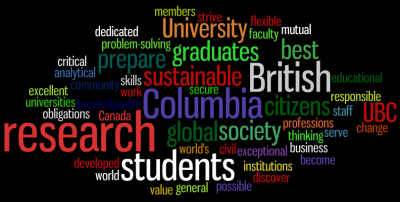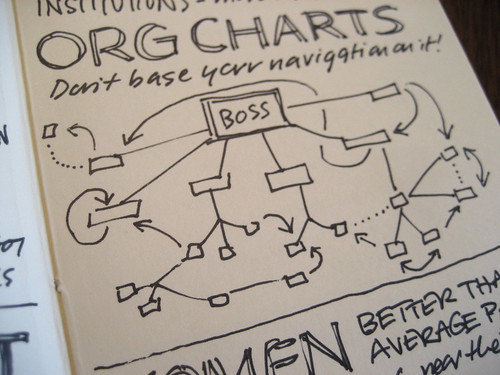I was really excited to attend Net Tuesday last week, and I wasn’t disappointed. Ben Johnson (currently with Union Gospel Mission) was one of two presenters giving a talk on data for social change. While he had tonnes of great points re: data analysis, what excited me most was the visualization of text data using Wordle.net. (I used Wordle last year to demonstrate what my blog was about, and it was right on target!)
Question 1: What message are you sending out?
What message does your board chair’s message in the annual report send?
What message does your vision and vision statements send?
What message does your newsletter send?
While we obviously write these items with very specific intents, sometimes our language, when we dig down deep, doesn’t actually reflect our intentions.
Copy and paste your text (or an rss feed) into Wordle, and voila! (See below for an example). You may be surprised. At UGM, Ben found that some of the language actually focused on programs, when really what they wanted to focus on was people.
Question 2: What messages do your donors respond to?
On UGM’s online donor form, an open box question asks “What inspired you to give today?”. Ben then took all the responses and threw them into World, and voila!
Many at UGM (a faith-based social services organization) might assume that faith and God would be reasons behind giving. These words were present, but even more so were words that indicated a connection to family (brother, father, sister, etc.) and times of year (eg Christmas).
If you analyze what is inspiring donors to give, you can update (and assess!) your communications accordingly to match donors’ interests.
Example: UBC Vision and Mission
UBC is my alma mater, and I have always loved and identified with their vision and mission. I would have done SFU’s but alas, we DON’T HAVE THEM (ridiculous and uninspiring, I know).

I can see easily now why I connect with UBC’s vision and mission. Beyond the obvious university words like “research” and “students”, the next most prominent words are “society”, “sustainable”, “global” and “citizens”. I’m surprised that “learning” isn’t more prominent though.
Try it! You might like it! What results did you get?

